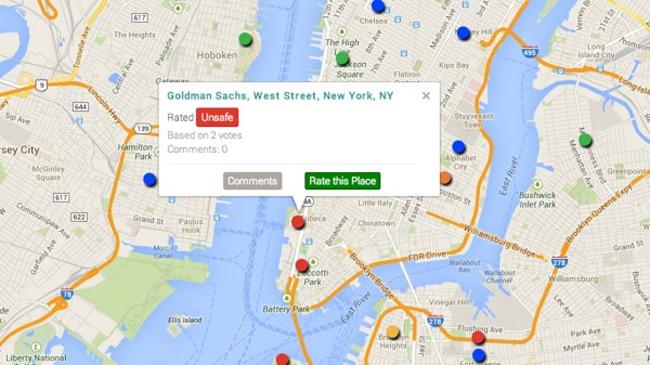
One of the challenges every person on the road has to face is knowing where to go, and whether or not it’s OK to go there. Safety in travel should always be a prerequisite when you’re someplace new to you, so when a new site emerges and offers you a way to consult with locals on which areas to stick to and which ones to avoid, it ought to be a great service, right? In essence yes, but if the site is called GhettoTracker, you are bound to run into some problems.
Before the site changed its name to Good Part of Town, GhettoTracker accumulated a lot of negative feedback from those who didn’t appreciate what the initial homepage suggested: “We use a rating system that allows locals and people familiar with the area rate which parts of town are safe and which ones are ghetto, or unsafe.” That statement was accompanied by a fun-loving, Caucasian family:

OK, we get it. By safe, you mean racially, right GhettoTracker? That’s what most people commenting in the Hacker News page linking the offensive site are asking. Never mind that the site is not really based on factual crime statistics and mostly on people’s perceptions of places. People were… displeased, to say the least. To try and fix the mishap, the site re-launched with the new name Good Part of Town, and with a new poster family:

In fact, just to cover all bases, the photo changed every time you refreshed the About page – sometimes it also showed a Latino family and an older Caucasian couple. All is fine and dandy, right? Nope, not quite. While Good Part of Town’s Twitter page reads like this:

…GhettoTracker’s Twitter page looks like this:

Those are only some of the things the Tumblr blog Public Shaming was able to observe and smartly screengrab before GhettoTracker…I’m sorry, Good Part of Town could clean house. At some point after that, the creator of Good Part of Town thought his idea was no longer worth the trouble and deleted it. It has since gone back up, and Gawker was able to screengrab its Coming Soon page that said, “We’re revamping the site to make it even better. Please check back soon!” with a quote from USA Tourist to make their claim of aiding unsure travelers sound more legit.
The creator of the site (who many believe to be Casey Smith, the president of a Florida-based company named Tallahassee Web Design) wrote Gawker writer Nitasha Tiku to try and explain why he made the site, why he decided to change the name, and why – contrary to popular belief – he isn’t a bigot or a racist (you can read the entire email transcript here):
I am not concerned about racial implications between good areas and bad areas. If a certain part of town has a lot of crime and is considered a bad area, I can’t be held responsible for the assumptions people may make in regards to factors like race and income. I’ve seen comments on blogs and in twitter that are trying to say this is encouraging racism or social stratification and that was never our intention. The ideas was to make it social, as if you were asking a friend, “Hey, I’m going to be visiting {your city} and thinking of staying at {some hotel}, is that a good area?”.
The name was not a publicity stunt, I honestly thought it would be a fun site for people to use. Since I have been proven wrong, I have changed the branding and, hopefully, people will still use the site because the good intentions are still there.
As of this writing, Good Part of Town looks like a generic forum page with folders for various areas (most of which are empty). The About page is nowhere in sight:



